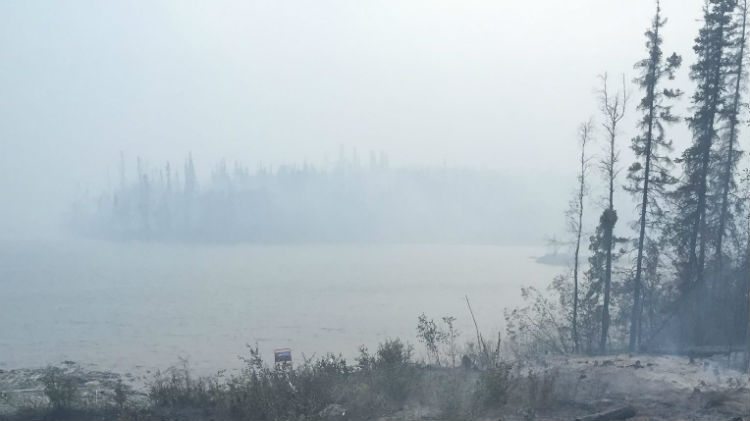Wildfires continue to burn in various locations across the NWT, which has left many areas with quite a lot of smoke.
Earlier in the week, the GNWT and the Office of the Chief Public Health Officer issued a wildfire smoke exposure advisory, which covered the North Slave Region, South Delta Region, Thebacha Region, Colville Lake, Deline, FT. Resolution (including HWY. 6), Lutsel K’e Region, Norman Wells – Tulita Region and Tuktoyaktuk – East Channel Region. The Yellowknife area has also been dealing with heavy smoke coverage in the last few days.
Jeremy Bird, the Communications Manager with the Department of Health and Social Services, shared some useful information regarding all the smoke across the NWT.
“Over the summer and fall months, the number of wildfires and total area burned in the NWT and across Canada are generally increasing. The smoke plumes that residents are experiencing could originate from wildfires occurring locally, regionally, elsewhere within the territory, and outside of the NWT. Hence, the amount of smoke that may be impacting communities and residents can vary during the day and throughout the summer and fall months.”
Bird also commented on an expected timeline for when the smoke might clear up.
“The smoke plumes that residents are experiencing could originate from wildfires occurring locally, regionally, elsewhere within the territory, and outside of NWT. Hence, it can be difficult to ascertain and provide a clear or expected timeline for when the wildfire smoke will clear up. Residents can access Canada’s Wildfire Smoke Prediction System to view the latest smoke modeling forecasts that shows how the smoke plume particulate levels will rise, fall, and move across North America over the next 72 hours. As fire and smoke conditions can change quickly, residents are encouraged to check the Environment and Climate Change Canada’s Public Weather Alerts for updates in air quality and other weather alerts.”
Exposure to smoke is highest in people who are physically active outdoors, which includes outdoor workers. Exposure can quickly result in sore eyes, tears, cough and runny nose. People at higher risk of severe health impacts include young children, elderly people, people with diabetes, lung, or heart conditions, and pregnant people.
You can reduce your exposure to smoke by avoiding strenuous outdoor activities and staying indoors with windows and doors closed. If you are experiencing serious symptoms such as wheezing, chest discomfort, or shortness of breath, please your local health centre.





